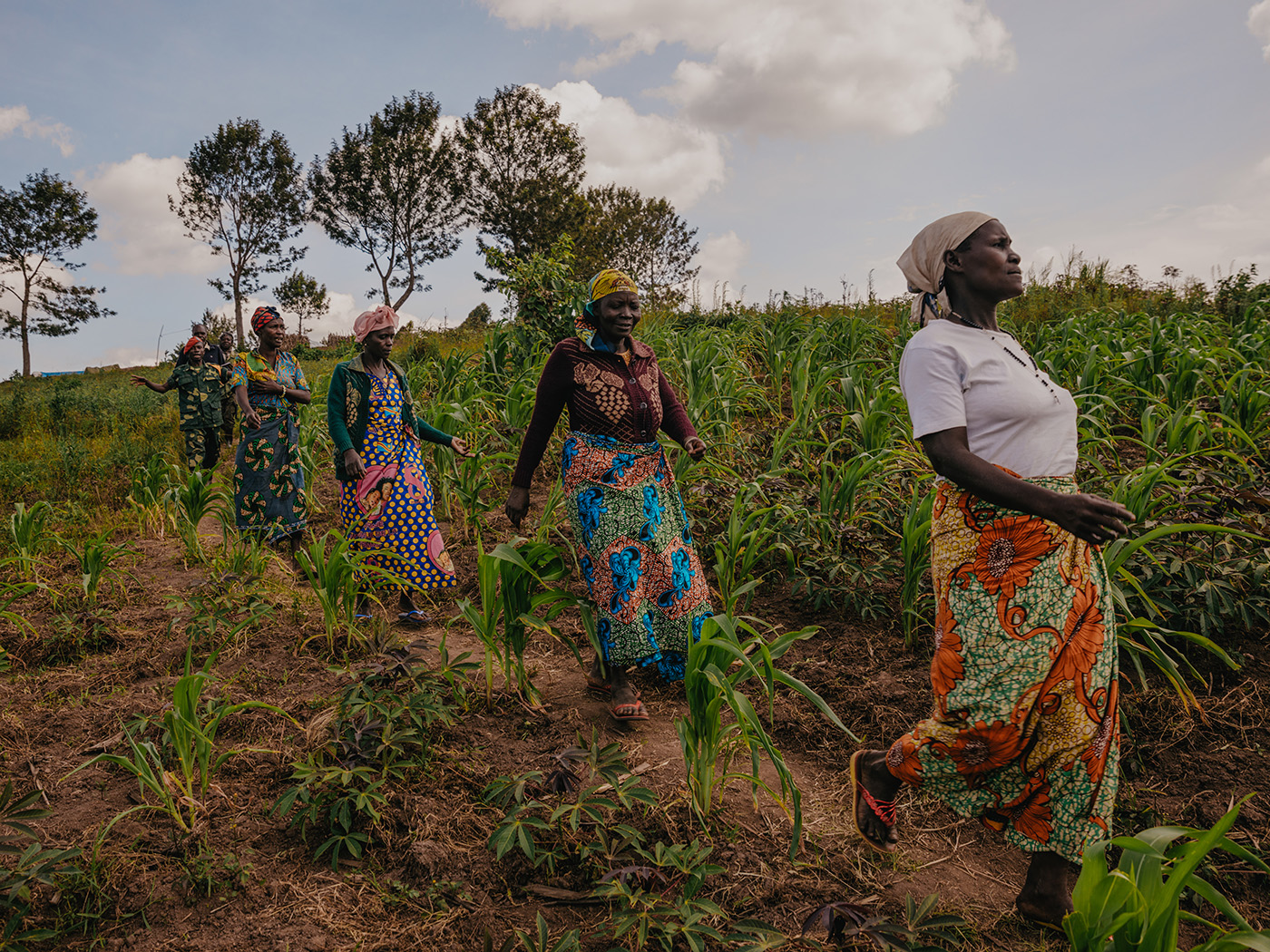
Nama Fenerenda and Georgette Ngabusi lead their women’s association walk back to Savo displacement site after a dialogue with the soldiers stationed at a Congolese army position close to the camp. Hugh Kinsella Cunningham: Bule, Djugu Territory, Ituri Province, DRC, May 21st 2022.
The province has seen nearly 2 million community members displaced by attacks of CODECO militias, claiming to represent the Lendu community. Displaced members of the Hema community have been forced to flee their destroyed villages and reside in camps, camps which have now themselves been targeted for attack. A February 2022 CODECO raid led to the murders of nearly 60 civilians in Savo camp.
Petitioning for more patrols, protection and peace
The quotation below, from the National Geographic article where Hugh Kinsella Cunningham first published this photography project, reflects on a similar delegation of women, this time in Masumbuko:
Five women in colorful clothing and headwraps walk hastily across fields of cassava near the village of Masumbuko in northeastern Democratic Republic of the Congo on their way to meet with an army commander near the displacement camp where the women live with thousands of other families.
When they arrive at the army post, a handful of soldiers in mismatched uniforms usher them past bunkers and trenches to a hut made of mud and bamboo. Inside, a young commander in slippers is slouched confidently in his chair, seemingly amused by their presence.
“We are here to ask you to join a community dialogue about tensions in the camp,” Love Kpakay says, her eyes looking down from the wooden bench where she and the other women are sitting tightly. “We need your help to bring calm. We plead for you to increase patrols and protect women when they go farm.”
The commander fixes her with a stare: “How can you call yourselves women leaders,” he asks, “if you speak in a trembling voice?”
Kpakay, 39, and the other four women are part of a small movement of women trying to break a cycle of violence that has killed more people than any conflict since World War II. Since 1996, the provinces of Ituri, North Kivu, and South Kivu have been stirred by multiple wars triggered by an increasing number of armed groups, weak state institutions, a dysfunctional army, and ongoing battles over access to land and power. Attempts to negotiate peace deals and the presence of a United Nations peacekeeping mission have failed to stem the bloodshed and its devastating effects on civilians. Those in the displacement camps that dot the hills of Ituri have been there for weeks or months, waiting for the war to end so they could go back to their homes.
Undeterred by the response from the commander, Kpakay —who has been living in the camps since 2021 when she fled her village with her four children—continued her appeal for increased protection from rebel attacks. The visit didn’t immediately improve security around the camp, but Kpakay says it helped improve relations between soldiers and civilians and reduced the tensions and vulnerability of those displaced by the violence.
“We need to find the courage to sit around the same table,” she says on her walk back to the camp. “You will see that we will find solutions.”
Bahati, S., Maubert, C. & Kinsella Cunningham, H. (2022) ‘These women are bringing some peace to war-stricken Congo’, https://www.nationalgeographic.com/culture/article/these-women-are-bringing-some-peace-to-war-stricken-congo